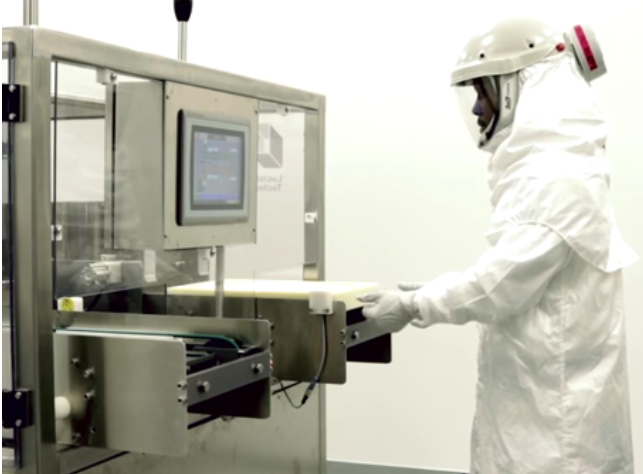 Getting a new medication to the market is not a fast or easy process, no matter how promising the drug is. There’s the research and development phase, testing, more testing, clinical trials, more clinical trials, then the arduous process of applying for and obtaining FDA approval. Most new drugs typically take years to reach consumers — that is, if they aren’t permanently derailed somewhere along the way. That’s why today’s announcement from Aprecia Pharmaceuticals is so exciting. We’ve been following the company for over a year, since they began production of their groundbreaking 3D printed epilepsy drug. The FDA officially approved Aprecia’s “ZipDose” tablets back in August, and now — finally — the drug is available to those suffering from seizure disorders.
Getting a new medication to the market is not a fast or easy process, no matter how promising the drug is. There’s the research and development phase, testing, more testing, clinical trials, more clinical trials, then the arduous process of applying for and obtaining FDA approval. Most new drugs typically take years to reach consumers — that is, if they aren’t permanently derailed somewhere along the way. That’s why today’s announcement from Aprecia Pharmaceuticals is so exciting. We’ve been following the company for over a year, since they began production of their groundbreaking 3D printed epilepsy drug. The FDA officially approved Aprecia’s “ZipDose” tablets back in August, and now — finally — the drug is available to those suffering from seizure disorders.
 The drug, called SPRITAM, is a form of levetiracetam, a medicine commonly used to treat epilepsy. It’s the first 3D printed prescription drug to be approved by the FDA and released to the US market, making today a historic one. While 3D printed pills might sound like a novelty — let’s 3D print it just because we can! — SPRITAM ZipDose tablets are likely to make a huge difference in the lives of those suffering from epilepsy.
The drug, called SPRITAM, is a form of levetiracetam, a medicine commonly used to treat epilepsy. It’s the first 3D printed prescription drug to be approved by the FDA and released to the US market, making today a historic one. While 3D printed pills might sound like a novelty — let’s 3D print it just because we can! — SPRITAM ZipDose tablets are likely to make a huge difference in the lives of those suffering from epilepsy.
Some people are pros at swallowing pills, while others — between 40 and 50 percent, actually, according to surveys — really struggle with it, and dysphagia, or difficulty swallowing in general, is a common symptom in epileptic patients, particularly older patients. To make things worse, pills generally tend to get bigger as dosages increase, so patients with the most severe symptoms often end up with giant “horse pills” that are a challenge for anyone to swallow. So much of a challenge, in fact, that many people give up and stop taking their medication, leading to more seizures.
By 3D printing the SPRITAM tablets, Aprecia was able to make them porous, meaning that they instantly dissolve in a patient’s mouth with a sip of liquid. No more painful, stressful swallowing attempts, and no more missed doses — not for that reason, anyway.
“As we explored potential applications for our 3D printing technology in prescription drug products, it was important that we identified disease areas with a real need for patient-friendly forms of medication,” said Don Wetherhold, CEO of Aprecia. “SPRITAM is designed to transform what it is like to take epilepsy medication, and is the first in a line of products we are developing to provide patients and their caregivers with additional treatment options.”
SPRITAM is now available in four dose strengths: 250 mg, 500 mg, 750 mg and 1,000 mg. The pills do get bigger as the dose goes up, but that shouldn’t make a difference anymore, as they all dissolve instantly. Considering that over three million people in the United States are living with epilepsy, this could have a tremendous impact on treatment compliance and overall health. It will also likely open the door for Aprecia and other pharmaceutical companies to further develop other 3D printed drugs, and that’s definitely something to be excited about. Discuss in the 3D Printed SPRITAM forum over at 3DPB.com.
Subscribe to Our Email Newsletter
Stay up-to-date on all the latest news from the 3D printing industry and receive information and offers from third party vendors.
Print Services
Upload your 3D Models and get them printed quickly and efficiently.
You May Also Like
Havaianas Collaborates with Zellerfeld to Launch 3D Printed Flip-Flops
The shoe of the summer is undoubtedly the flip-flop. Easy on, easy off, your feet won’t get sweaty because there’s not much material, and they’re available in a veritable rainbow...
UCLA Researchers Develop 3D Printed Pen that May Help Detect Parkinson’s Disease
Diagnosing Parkinson’s disease is difficult. Often, early symptoms of the progressive neurological condition may be overlooked, or mistaken for signs of aging. Early diagnosis can help save lives and improve...
Printing Money Episode 30: Q1 2025 Public 3D Printing Earnings Review with Troy Jensen, Cantor Fitzgerald
Printing Money is back with Episode 30, and it’s that quarterly time, so we are happy and thankful to welcome back Troy Jensen (Managing Director, Cantor Fitzgerald) to review the...
Heating Up: 3D Systems’ Scott Green Discusses 3D Printing’s Potential in the Data Center Industry
The relentless rise of NVIDIA, the steadily increasing pledges of major private and public investments in national infrastructure projects around the world, and the general cultural obsession with AI have...


































